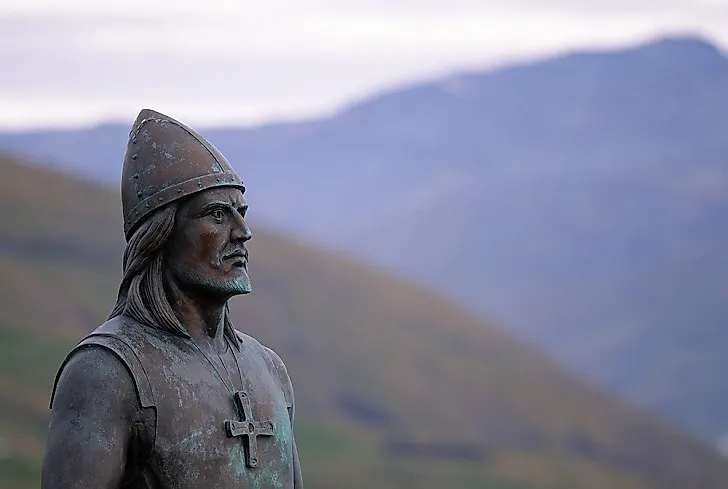Leif Ericson: Explorers Of The World

5. Early Life
The 11th Century Norse explorer Leif Ericson, who likely became the first European to reach North America, was born in Iceland in 970 C.E. His father was the famous Viking, Eric the Red. He spent his childhood at his father's estate in Brattahild, a settlement in what is now eastern Greenland. There is no record of his education but, as the son of a wealthy explorer and leader, he likely would have dedicated his early years to the study of navigation and mathematics. As a young man, people thought him considerate, intelligent, and good looking. He became a Christian after meeting with King Olaf of Norway and being exposed to Christian beliefs.
4. Career
Leif Ericson was born to a clan of Norse explorers, that heritage led him to follow in the footsteps of his forbearer's wanderings. He heard from a friend about a new land to the west, although his friend had never made landfall there himself. Leif was so excited to find it that he bought his friend's ship just for the task. Leif sailed and reached the new land, and built a settlement where he found a land full of bounty. His brother, Thorvald, also sailed to the new land, but met fierce natives. Unfortunately, Thorvald was killed in a fight with these natives, although his crew was able to sail back to Greenland with timber and grapevines.
3. Discoveries
In his voyage to North America, Leif Ericson proved to the other Norsemen that there was a land of plenty across the ocean. That the land was overgrown with grapevine and wheat. Timber was everywhere. Salmon crowded the rivers and other fish filled the lakes. Deer roamed the forests. He built a settlement there, likely in what is now Newfoundland, Canada, dubbing it as Vinland. Some historians believe that he was able to venture as far as into Minnesota, by way of the Hudson Bay, and even into the Great Lakes along Michigan. On his way back to his homeland, he was able to rescue a shipwreck and its crew, and was subsequently rewarded their rich cargo.
2. Challenges
The settlement at Vinland was a good place, but he continued to explore the nearby places. After a while, he and his men sailed back home. He also visited Norway, the birthplace of his father, Eric the Red. He was accorded a welcome by King Olaf, whose influence saw Leif convert to Christianity. On a mission for the same king, he sailed back to Greenland and converted as many as he could to Christianity. His father, however, was lukewarm to these religious ideas, but Leif was able to convert his mother, who would later even have a Christian church built on their estate. Later, he succeeded his father as Chieftain in their Greenland settlement.
1. Death and Legacy
Leif Ericson lived a remarkable life as an explorer. He also married and had two sons, including one illegitimate, named Thorgils, and the other legitimate, named Thorkell. Thorgils and Thorkell succeeded Leif as Chief of the eastern settlement in Greenland after he passed away, sometime between 1019 and 1025. That other Greenlanders followed in his footsteps in establishing new settlements in the North American lands he discovered was Leif Ericson's greatest legacy to his people. It has even been said that Columbus heard about Newfoundland when he visited Norway in 1477. Although the discovery was common knowledge in many seaports across Europe, no one would make landfall in North America after Leif Ericson until Columbus later did so, when he claimed lands across the Atlantic for Spain.











